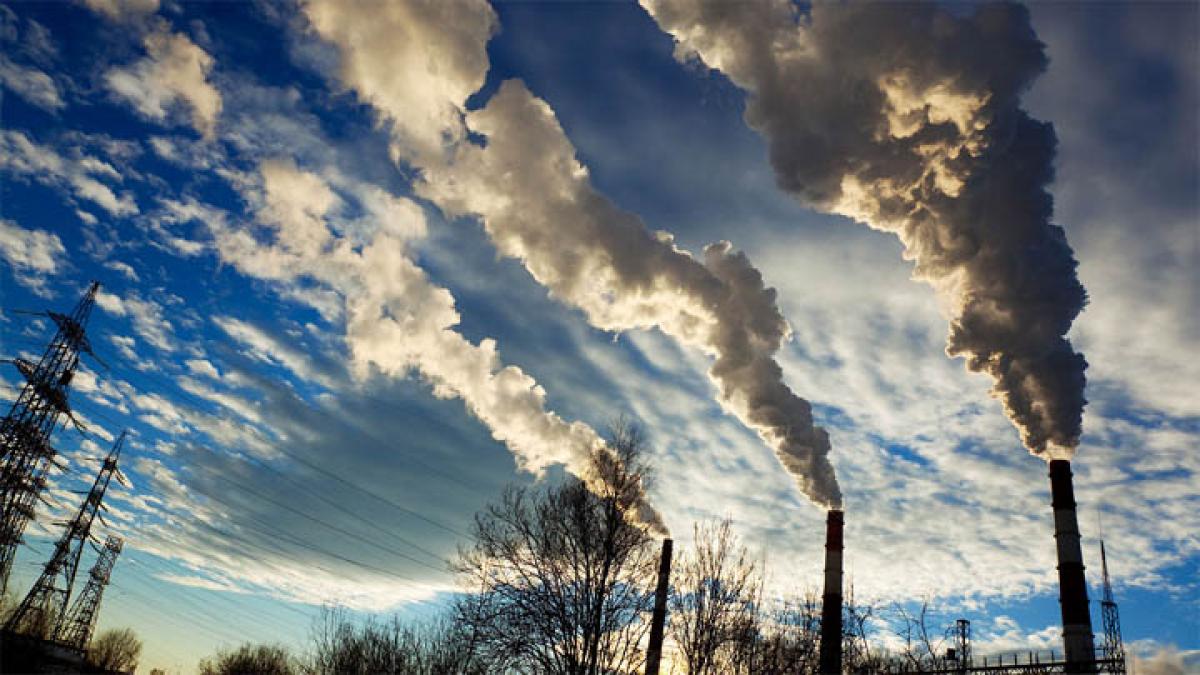Live
- GMR Airports Unveils AI-Powered Digital Twin Platform to Transform Airport Operations
- India poised to become leading maritime player: PM Modi
- Top Causes of Kidney Stones and How to Recognize Silent Symptoms
- India’s renewable energy capacity logs 14.2 pc growth at 213.7 GW
- Winter Session of Odisha Assembly adjourned sine die
- Biden calls Trump's tariff approach 'major mistake'
- After Drama Over Eknath Shinde’s Chief Minister Race, Maharashtra Cabinet Formation Faces New Tensions
- Egyptian FM, Blinken discuss recent developments in Syria
- Iran's supreme leader says Syria's developments result of US-Israeli 'plot'
- Elon Musk to Purchase $100 Million Luxury Mansion Next to Donald Trump's Mar-a-Lago, Report Reveals
Just In
COP21: Indian women leading the fight against climate change

29 Nov 2015 4:20 PM IST

x
Highlights
As France gears up to welcome over 40,000 delegates, including world leaders like U.S. President Barack Obama, Indian Prime Minister Narendra Modi and Chinese President Xi Jinping for the 2015 United Nations Climate Change Conference ―twenty-first session of the Conference of the Parties (COP 21), the livelihoods of millions of dryland farmers across Africa and India are affected by climate related problems.
As France gears up to welcome over 40,000 delegates, including world leaders like U.S. President Barack Obama, Indian Prime Minister Narendra Modi and Chinese President Xi Jinping for the 2015 United Nations Climate Change Conference ―twenty-first session of the Conference of the Parties (COP 21), the livelihoods of millions of dryland farmers across Africa and India are affected by climate related problems.
.jpg)
But there are some success stories wherefarmers are leading the way and are finding potential ways to fight climate change.
According to the recent study by Lanzhou University in China, the dryland area of the world continues to expand by global warming, and if global emissions continue to rise, dryland area is expected to cover 56 percent of the world's land surface by 2100.
In the deserts of Rajasthan, India, women farmers are adopting farming methods, which show there is hope to combat climate change impactin the drylands, the ecosystems most adversely affected, and move out of poverty.
The Thar desert, spread over an area of 320,000 sq km, covers 60% of the state. The region faces water scarcity for 9 to 11 months in a year and frequent droughts (1 in 2.5 years).
These efforts are part of the CGIAR Research Program on Dryland Systems, where work is underway in three states of India (Rajasthan, Andhra Pradesh and Karnataka) to empower farmers and local institutions to build resilient and sustainable farming systems that cope with the vagaries of current and future climate.
As reported by Al Jazeera, Women leaders like Mrs Mani and Mrs Rameshwari from the Derasar village in Rajasthan, have been leaders in their community and taken on many innovations such as improved crop varieties includingpearl millet and other crops suited to the region; fruit trees to provide nutrition and income; constructing embankments to capture rainfall and prevent runoff and soil erosion; and planting grasses and fodder trees to provide fodder for cattle.
Interestingly, new institutional arrangements have been implemented to enable communities to better manage common property resources such as the common grazing lands or to form women’s self-help groups to weigh and market livestock for higher income.
This success is due to the partnership of different organizations coming together to work for a common cause. Local community and a grassroots organisation GRAVIS (Gramin Vikas Vigyan Samiti) along with scientific expertise from the International Crops Research Institute for the Semi-Arid Tropics (ICRISAT) worked closely with the local community. Funding has also been critical coming from CGIAR donors around the world under the CGIAR Research Program on Dryland Systems.
“The strategy takes women’s needs into account by working directly with them. Women are empowered to take charge of their lives and reduce the vulnerability of the communities living in these harsh environments.” says Dr Shalander Kumar, Scientist, ICRISAT.

Next Story
More Stories
ADVERTISEMENT
© 2024 Hyderabad Media House Limited/The Hans India. All rights reserved. Powered by hocalwire.com






